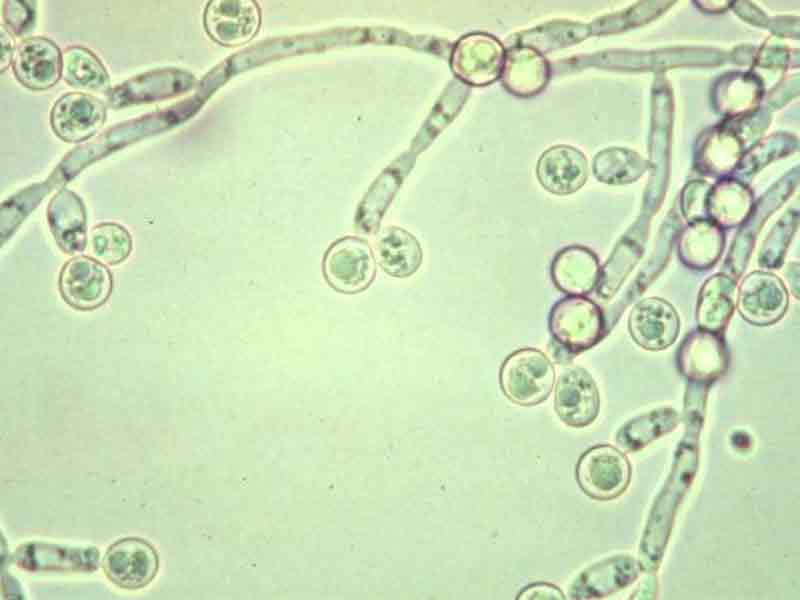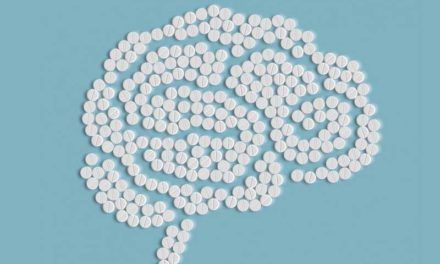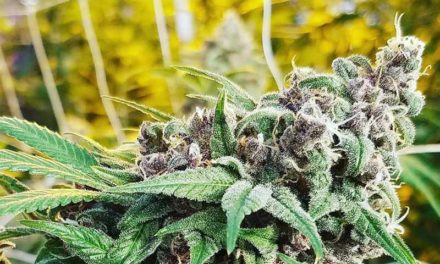Our bodies are inhabited by millions of bacteria and fungi. Most of them are harmless and live in harmony with other „native” types which can be found in the mouth, inside the digestive system or vagina. Under normal circumstances, harmful bacteria and fungi are kept under control by the immune system and the good bacteria which won’t allow them to grow and cause disease. Sometimes the balance between good and bad bacteria is broken, and things get out of control.
What is Candida?
Candidiasis is a fungi infection caused by one of the most common types of yeast infection, Candida Albicans. This kind of fungus is usually found in moist areas of the body, like mouth, vagina or gut. As long as the immune system works normally, this infection doesn’t cause serious health issues, but if the immune system is weakened the disease could spread to other areas of the body including blood and brain.
Candida Overgrow Syndrome is a term used to describe a chronic disease which can create systemic problems. Medication, malnutrition, diabetes or AIDS are just some of the most common triggers for yeast infection. Usually, this fungus is useful for absorbing nutrients and improve digestion, but if overproduced it can cause specific symptoms. The most dangerous type of candida infection is in the digestive track, because of left untreated, it can quickly escape into the bloodstream. The only way to keep diseases under control is to have a good immune system.
Types of candidiasis include:
According to the infected area of the body, yeast infections can be divided in:
- Thrush — is another name for the mouth yeast infection due to overgrowing of Candida Albicans. It affects the wet area like the tongue, inside of the cheek and the surface around the lips and it is a common health issue for people diagnosed with cancer or AIDS because they take medication which suppresses the immune system. This kind of infection can develop in individuals with a healthy immune system as well, especially in people with long-lasting denture irritation or diabetes.
- Esophagitis — when thrush spreads, even more, it can reach esophagus and cause the infection known as esophagitis. People undergoing a chemotherapy treatment or with AIDS have a higher risk of dealing more frequently with this problem.
- Cutaneous (skin) candidiasis — Candida can also cause skin infections, mostly in the areas most exposed to the moist environment or less exposed to ventilation like hands of people who wear a lot of rubber gloves or the base of fingernails regularly exposed to moisture, skin folds under breasts, buttocks or around the groin areas.
- Vaginal yeast infections— Candidiasis is often sexually transmitted. Statistically, more than 75% of the women are infected with this fungus during the lifetime, and in almost 45% of the cases, this becomes a chronic health issue. Pregnant or diabetic women are more susceptible to developing a yeast Frequent douching, birth control pills and antibiotics are another common cause of vaginal infections with candida.
- Deep candidiasis(for example, candida sepsis) — represents the most severe and dangerous infection with Candida Albicans because in this case the fungus entered the bloodstream and is being spread all over the body. Newborn babies or people with severely weakened immune system are the easiest targets for this stubborn infection because the fungus finds a way to enter the circulatory system through catheters, surgical wounds or ventilation. Healthy people can also deal with candida sepsis under some extreme conditions like having severe wounds or burns or using intravenous drugs.
These are not the only types of candida infection; these are only some of the most frequently encountered.
Candida Development
Candida develops when there is an unbalance between the good and bad bacteria which live in our bodies. When an external factor perturbed the peaceful exitance between the good and bad microorganisms, the bad ones take over and grow out of control. There is much possible cause candida overgrows including unhealthy diet or poor hygiene. Here are some of the most common reasons why yeast infection appears:
- Treatment with antibiotics – sometimes the only way to destroy an active bacteria infection is a treatment with antibiotics. The problem with this type of medication is that it affects and kills good bacteria as much as it does with the bad ones. If used for long periods of times, antibiotics become less effective because the infection gets used to them and develop resistance. The good bacteria in the body is essential for preventing candida from spreading, but if destroyed by antibiotics, there is nothing left to stop the yeast from gaining control.
- Weakened Immune System – represents a wide open door for many kinds of disease, including candida infection. The most exposed are children, old people and those dealing with aggressive medication treatments.
- Cancer Treatments – It was proven by many medical studies that cancer patients have a significant risk of developing invasive candidiasis. Radiation and chemotherapy weaken the immune system to kill the tumors and dangerous cell, but in the process, they also kill the good bacteria which guard the infections against
- Oral Corticosteroids – people using asthma inhalers face a higher risk of going candida in the mouth. If detected early, this disease can be treated with natural remedies, but it is better to prevent. So if using corticosteroids inhaler make sure to switch the mouth after each and every use.
- Birth Control Pill – They are not a direct cause of Candida overgrow, but they can influence it under certain conditions. Birth control pills are full of hormones, and if a woman has a bit of sweet tooth, they can cause an unbalance in the body and generate a yeast. Many women reported that this problem repeats as long as they take these pills.
- Diabetes – Candida loves sugar and feeds of it. People diagnosed with type 1 or type 2 diabetes have higher blood sugar levels that ordinary people which make it easier for the fungus to spread, enhancing the risk of candida overgrowth syndrome.
Candida Albicans is a very stubborn fungus which will find an opportunity to grow. Fortunately, this condition is completely manageable because as long as we know the causes we can treat its effects.
Symptoms of Candidiasis
Infections with candida sometimes can represent a challenge to be diagnosed by doctors because this type of diseases doesn’t present specific symptoms. Depending on the individual, cause, and location each type of candidiasis presents different symptoms which can be misleading. Here are some of the clues which could indicate a yeast infection:
- Chronic Fatigue – is one of the most common symptoms of candida. If you feel drained of energy for extended periods of time and no matter how much you sleep you still wake up tired you could suffer from chronic fatigue. This problem may have various causes, but candida is one of the most frequently met
- Oral Thrush – is caused by the same strain of fungus which causes vaginal candida. If not treated immediately, it may spread through the entire digestive system and eventually reach the heart. This type of candida spreads through saliva.
- Hormonal Imbalance – is another misleading symptom which can be present in the case of yeast infection in some people. Migraines, water retention, low sex drive, PMS, endometriosis or early menopause are all possible results of undiagnosed and untreated candida infection.
- Intestinal Distress – persistent bloating, flatulence, constipation, cramps, diarrhea or burpings all indicate an unhealthy gut bacteria infection. Unfortunately, in this situation, healthy bacteria can no longer fight alone to re-establish the order.
- Mood Disorders – could be experienced by people suffering from candida infection. Depression, anxiety, mood swings, irritability, and panic attacks could be hiding a yeast infection or another medical problem which needs further investigation
- Sinus Infections – could indicate a yeast overgrow and determine nasal congestion, cough, seasonal allergies or fake flu If the sinus problems don’t get better after classic treatment you should try verifying for candida infection.
- Skin and Nail Fungal Infections – are a common health problem for athletes and represent the first indicator of systemic infection.
- Recurring Vaginal and Urinary Tract Infections – could be a clue for candidates because this is a sexually transmitted disease and partners could pass it from one to another for a long time. Women can avoid wearing tight synthetic underwear and taking hot baths to reduce the risk of developing candida.
- Brain Fog – is usually overlooked as a symptom of candida infection, but it could generate a lack of focus, inability to concentrate or forgetfulness.
Candida Treatment
The diagnose of candida infection is established by a doctor after a full evaluation of the medical history, following clues like autoimmune disorders, diabetes, recent medication and blood tests. Once the diagnose is established, in the case of otherwise healthy people, candida can be treated within a relatively short period, sometimes even with a single dose of antifungal medication. On the other hand, in the case of people with severely weaken immune system candida is tough to heal because the body lacks its natural soldiers who can keep it under control.
Usually, candida infections can be prevented by maintaining a excellent hygiene, avoid taking antibiotics unless a doctor recommends them and live a healthy lifestyle with good eating habits. People with diabetes should keep strict control over the blood sugar levels.
Specific Treatment of Candida Infections
The treatment of Candida infections should be made only under medical supervision. There isn’t a pill that cures the infection immediately. The treatment is recommended by a doctor after a full examination and revision of the medical condition according to the type and location of the infection:
- Thrush — is treated with mild antifungal medication like nystatin or clotrimazole. Fluconazole is used for severe cases.
- Esophagitis — oral antifungal pills of fluconazole are the most common treatment
- Cutaneous candidiasis — powders and creams with high concentration of antifungal medication are usually recommended, along with perfect hygiene
- Vaginal yeast infections — can be healed using local antifungal medications like cremes and ointments. Also, pills could be included in the medication Both partners should follow the treatment.
- Deep candidiasis — is brought back under control with the intravenous anti-fungal drugs, such as voriconazole or fluconazole.
Some minor or mild cases of yeast infections could be treated using homemade remedies, so you can avoid using the antifungal medication if not necessary.
- Garlic – has antifungal properties due to the high concentrations of sulfur compounds. Two to four cloves a day could help reducing candida infection. They ar are more efficient if crushed and can be eaten or applied to the skin.
- Coconut Oil – is rich in medium chain fatty acids such as capric acid o lauric acid which have antimicrobial properties. This oil can be used externally and applied on the skin up to four times a day or included int the daily diet and have one to three tablespoons daily.
- Yogurt – contains probiotics which re-enforce the natural army of the immune system. Plain yogurt with live lactobacillus acidophilus should be part of the daily diet
- Tea Tree Oil – is another natural antifungal and antibacterial cure. A few drops can be used on a tampon to treat vaginal candida or pun in a glass of water and gargled to treat thrush. Make sure not to swallow the solution.
- Oil of Oregano – contains carvacrol, an antifungal and antimicrobial compound very useful for treating candida infections. Mixed with olive oil and applied on the body can treat yeast grow on the skin or mixed with water can be drunk twice a day. Make sure you buy pure oregano oil, not mixed with alcohol
- Apple Cider Vinegar – helps restore the natural ph balance of the body. It contains high levels of enzymes which create an environment that kills candida from the digestive tract. Just dissolve one tablespoon of apple cider vinegar in a glass of water and drink before a meal daily. At first, symptoms might get worse, but soon you will feel an improvement. It also has external use and can be dissolved and applied on the skin.
- Olive leaf – has excellent antifungal properties which destroy candida and contains oleuropein, an enzyme which stimulates the immune system. Olive leaf tea can be consumed up to three times a day to treat and prevent yeast infections
- Cranberries – are rich in arbutin, a substance which kills Candida Albicans. Unsweeten cranberry juice can cure candida within weeks if consumed three times a day.
- Cinnamon – has antibacterial, antifungal and antiparasitic properties, so Candida doesn’t stand a chance. Included in the daily diet, cinnamon can restore the order between bacteria in just two months.
- Black Walnut – has a high concentration of tannins, a potent astringent and antifungal agent which can treat yeast. It can be consumed as capsules or extract according to the doctor’s instructions.
In addition to using natural ingredients to treat Candida infections, one should be very careful with the lifestyle. Trying to develop healthy eating habits with low quantities of refined sugar or carbs can reduce the chances of losing control over the intestine bacteria. Probiotics supplements also help re-enforce the natural army of the digestive system.
Getting Professional Aid
You should schedule a consultation with a doctor whenever you experience one or more of the symptoms previously described. If you suffer from autoimmune disorders, diabetes or follow a treatment with antibiotics, you need specific help in orde to regain control over your body and strengthen the immune system. It is important to see your doctor if you suffer frum persistent vaginal candida or thrush. If left untreated this condition can spread and generate more complicated problems.
Otherwise, healthy women can self-treat for simple candida vaginitis, especially if the problem is recurrent, but if it persists despite the therapy or it recurs shortly after treatment you should call a doctor. Usually, this condition can be easily treated and in a very short time in the case of individuals with a good general health condition. Antifungal medicine gets things back under control. More you postpone the visit to the doctor the more difficult it will be to treat the condition at it might get to enter the bloodstream and spread to all the important organs.
People who suffer from chronic disease and have extremely weak immune system might have to fight it for longer because in their case it is easier for the fungus to gain resistance to the treatment. Same thing could happen to people with good health who take antibiotics for a long time. Candida infection can be easily controlled if treated from the first symptoms.






